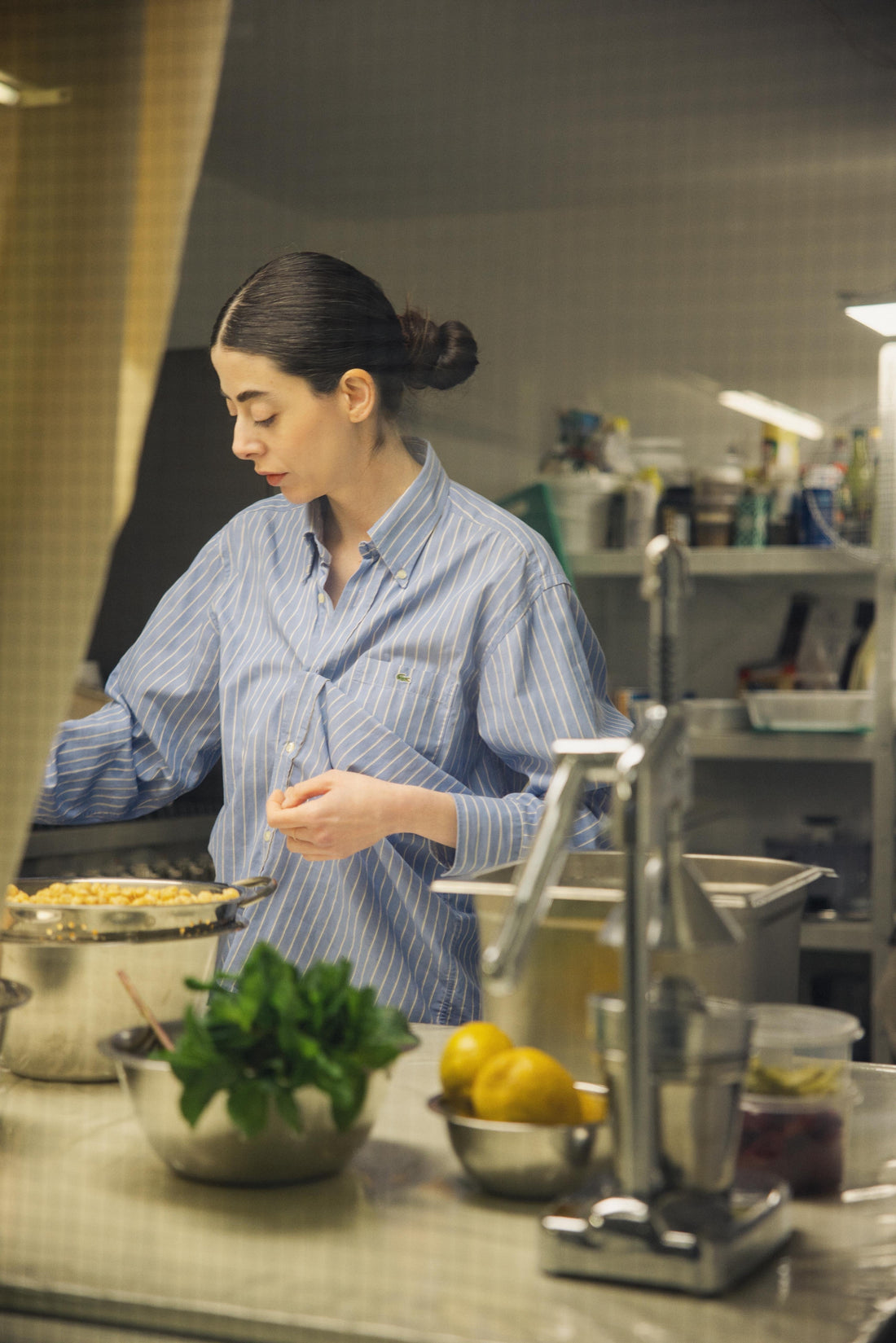
Share
Micheline Nahra on Food, Memory, and the Art of Setting a Living Table
In this edition of In Good Taste, the Lebanese culinary artist shares her daily rituals, ancestral recipes, and why the most beautiful tables are the ones that remember.

What does it mean to set a table that remembers? For Micheline Nahra — culinary artist, ritualist, and soft-spoken spell-caster of taste — it means more than assembling forks and plates. It means coaxing memory from olive oil. It means letting tomato paste bask in the sun on the rooftop. It means silence — not the awkward kind that fills a too-long dinner, but the sacred kind that allows hands and mind to move in tandem, unspoken, like old friends. It's a beautiful, slow, and mindful process that inspires and appreciates the art of cooking.
Born in South Lebanon and now based in Rotterdam, Micheline doesn’t cook in the way we’ve come to define it. She invokes. Her practice lies somewhere between folklore and food styling, between inherited memory and contemporary gesture. A spatula becomes a metronome. Spring onions become archives. Tables — never round, always oval — become sites of ritual, where cigarette ash and breadcrumbs share equal billing. Her work is a testament to the preservation of traditional practices, connecting us to our cultural heritage.
When we invited Micheline to sit for In Good Taste, we asked her what makes a life beautiful. Her answers, much like her practice, were simple, slow, and unforgettable — scented with jasmine, dusted with za’atar, and wrapped in the hush of deep remembering. Her culinary philosophy is deeply rooted in memory, evoking a sense of nostalgia and emotional connection.
What is a small daily ritual you return to that brings you quiet joy?
Making coffee in the morning and the pause before the day begins.
Is there a scent that immediately brings you back to your childhood?
Jasmine at night in South Lebanon.
What object or tool in your kitchen feels the most like an extension of you?
A spatula. I will use a spatula at least once a day. With almost every task I do in the kitchen, the spatula inevitably comes into play at some point.

“Whenever I make kammouneh, it feels like I’m pulling the South into my kitchen.”
— Micheline Nahra
Describe your dream table setting — what’s on it, who’s around it?
It always has to be an oval table, a shape that holds cultural significance in my heritage, somewhere outdoors, maybe, with candles, breadcrumbs on the tablecloth, and some plates with cigarette ashes on them because we have been sitting around the table for hours, eating and taking breaks, and definitely with my loved ones around.
What’s something in your fridge right now that tells a story?
It’s in the freezer — knefeh, the rolled one stuffed with walnuts, rolled by my mother and my grandmother. This dish, frozen in time, carries the memories of their hands shaping it, the laughter that filled the kitchen, and the love that seasoned every bite.
Can you share a recipe that holds a special memory for you?
Kammouneh. A mix of fine bulgur, onions, mint, parsley, basil, tomato paste, pepper paste, tomato juice, spices and a lot of olive oil — something we eat a lot in the South of Lebanon. It’s an easy recipe that is also very hard not to get right. The aroma of the herbs, the rich taste of the olive oil, and the memories of home that it evokes make it a dish that feels like I’m pulling the South into my kitchen.
Is there a place that shaped your sense of beauty?
It will always be the South of Lebanon... grapes hanging from pergolas, trays of tomato paste drying in the sun, kitchens filled with grandmothers, aunts, mothers — all working together to make a feast.
What’s a taste or ingredient you find yourself obsessively returning to?
Spring onion. In the South, we eat it fresh, raw, alongside almost every meal… sometimes transformed, as in the case of the spring onion oil I now make.
Is there a ritual passed down to you that you now preserve in your work?
Preserving or processing ingredients differently… fruits becoming jam, tomatoes into paste, apples into vinegar. These acts required time, patience, and the efforts of many hands. I carry that with me in my work.
What’s a book you’ve gifted more than once — and why?
I don’t think I’ve ever gifted the same book more than once. A book should fit the person, their moment, and their curiosity. I like to choose differently each time.
What’s something you’ve been gifted recently — and something you’ve loved giving?
A good pillow brought me joy. I love giving food — especially when it’s unexpected. And when I can, vegetables from our land in the South.
What role does silence or conversation play in your creative process?
Both. Silence for imagining, conversation for shaping ideas.
How do you know when a table is “done”?
When it feels alive, not staged. When something might tip over. When people are already reaching across it.
What makes you feel at home, no matter where you are?
Bread, za’atar and olive oil.
What music do you listen to while you work?
I don’t. I need total silence — just my hands and my mind following each other.
In a world of fast taste and faster trends, Micheline Nahra reminds us that beauty is not new — it’s remembered. It lives in the gestures we repeat, the tables we return to, the recipes we whisper into olive oil. It might be rolled by hand, stuffed with walnuts, or eaten with spring onion. But more often than not, it waits quietly — in the freezer, in the silence, in the South.
PHOTO CREDIT:
- Cover Photo: Aya Saleh
- Photo (2): Aya Saleh
- Photo (3): Fatima Elie
- Photo (4,5,6) Micheline Nahra



